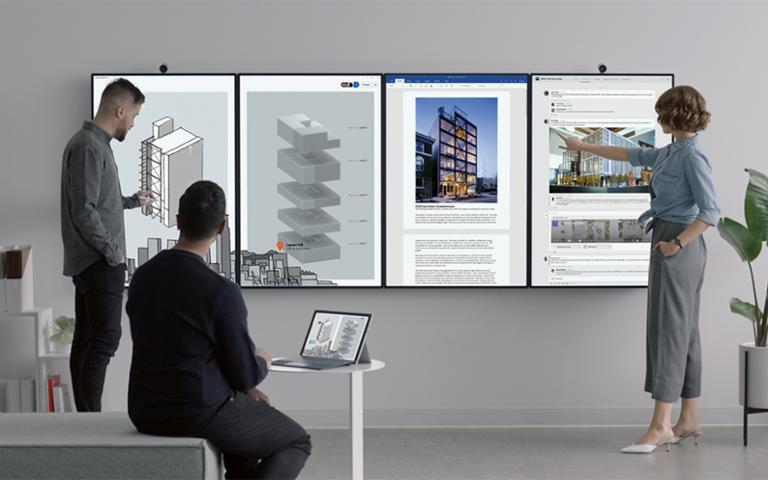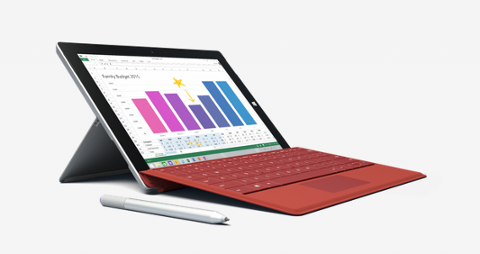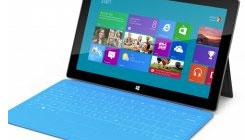Microsoft's Surface Hub 2 Is Amazing, and You'll Probably Never Get One
Microsoft just announced its Surface Hub 2, a second swipe at its concept of big screens for every conference room. This time, it’s also trying to bring that screen to your desk. But you’ll probably never see this platform in real life. The image above is actually four Surface Hub 2 units strung together, which is the new hardware’s biggest feature: An office can line up to four as seen above (or in landscape, if that’s your preference) and use them as one large screen. It sports a 50.5-inch “4K+” display, is touch capacitive, can operate in portrait or landscape, and runs the full Office 365 suite in addition to Microsoft Whiteboard. There’s also a camera for teleconferencing (4K, naturally), integrated speakers, and a far-field microphone. The Surface Hub 2 presents in a 3:2 aspect ratio. Should you not want to mount it to a wall, Microsoft partnered with Steelcase on an easel. It allows the display to be rotated as you like, and Microsoft is teasing more display-stand options (it says the partnership will bring forth a “system of rolling stands,” though only the easel is shown). If you scrolled past the video above, go back and give it a watch. Conceptually, the Surface Hub 2 is the coolest piece of office tech we’ve seen in a long time. It’s immediately better than the original Surface Hub, and leapfrogs Google’s whimsical Jamboard. You want one. But you’ll probably never get a Surface Hub 2. First, Microsoft isn’t selling it just yet; it’s coming sometime in 2018 for “select commercial customers,” and won’t be available to the public until 2019. Microsoft also hasn’t shared pricing. The original Surface Hub cost anywhere from $6,999 to $19,999, but had different screen sizes. The most direct comparison to the Hub 2 is the 55-inch Surface Hub, which cost $6,999. By restraining the Hub 2 to a single size, Microsoft may simply be democratizing cost; you can buy as many (let’s say at $6,000 apiece, for the sake of argument) Surface Hub 2 units as you like, and the combined screen size and cost can meet your budget and needs. But it’s still a hefty investment. And while we’re proponents of remote work and having decentralized offices and teams, this kind of thing only exacerbates a company’s spend: Rather than one or two Surface Hub 2 screens in a single office, a business may need to outfit other locations, as well. Microsoft has created what might be the most forward-thinking piece of office kit we’ve seen in a while, but we hope the company is invested in Surface Hub long-term. Most office conference rooms are fully equipped with whiteboards and video conferencing screens, so for most firms, there’s no immediate reason to buy a Surface Hub 2. We like that it can travel on its easel, but stand-ups at your desk or cubicle pod aren’t really how most meetings happen. As cool as the Surface Hub 2 is, your company probably isn’t going to buy it, and it’s far too expensive to warrant having one in your home or snapping one up for your startup.


